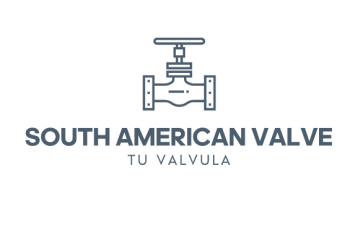Floating Ball Valve
South American Valve is the largest Floating ball valve supplier in Brazil. A floating ball valve is a type of ball valve where the ball is free to move or “float” within the valve body. It is one of the most common and widely used types of ball valves due to its simplicity, versatility, and reliable sealing capabilities. Floating ball valves are typically used in applications where moderate pressure and temperature conditions are present. The body of a floating ball valve is typically made of cast or forged steel and provides the main housing for the valve components. It is designed to withstand the operating pressures and temperatures.
South American Valve is the largest Floating ball valve supplier in Brazil. Floating ball valves are commonly used in applications where moderate pressure and temperature conditions exist and where reliable shut-off and control of flow are needed. They are widely employed in industries such as oil and gas, water and wastewater treatment, chemical processing, and general industrial applications.
Parts
- Body
- Ball
- Seat
- Stem
- Seal
- Actuator
Benefits
- Simple Design: Floating ball valves have a straightforward design, consisting of fewer components compared to other valve types. This simplicity makes them easy to install, operate, and maintain.
- Cost-Effective: Floating ball valves are generally more cost-effective compared to other types of ball valves, making them a popular choice for a wide range of applications.
- Reliable Shut-Off: Floating ball valves provide reliable shut-off capabilities. When the ball is rotated, it seals against the seats to block the flow, ensuring tight shut-off and preventing leakage.
- Low Torque Operation: Floating ball valves have relatively low torque requirements for operation, making them easy to open and close, even in larger sizes or high-pressure applications.
- Versatility: Floating ball valves can handle a wide range of fluids, including liquids, gases, and slurries. They are suitable for various industries, including oil and gas, water treatment, chemical processing, and more.
- Quick Opening and Closing: Floating ball valves offer fast opening and closing capabilities, allowing for rapid flow control when required.
Applications
- Oil and Gas Industry: Floating ball valves are extensively used in the oil and gas industry for controlling the flow of crude oil, natural gas, and petroleum products. They are employed in pipelines, production facilities, storage terminals, and refineries. Floating ball valves offer reliable shut-off, ease of operation, and quick opening and closing, making them suitable for high-pressure and high-temperature applications.
- Water and Wastewater Treatment: Floating ball valves are used in water treatment plants, wastewater management systems, and desalination plants. They play a crucial role in controlling the flow of water, chemicals, and sludge during various treatment processes. Floating ball valves provide reliable shut-off and control of flow in these critical applications.
- Chemical Processing: Floating ball valves are widely used in the chemical processing industry for controlling the flow of various chemicals and corrosive fluids. They are employed in pipelines, reactors, storage tanks, and other process equipment. Floating ball valves offer excellent sealing performance, chemical resistance, and ease of maintenance.
- Power Generation: Floating ball valves are utilized in power plants, including thermal power plants and combined cycle power plants. They are used in steam lines, feedwater systems, cooling water circuits, and other applications requiring efficient flow control. Floating ball valves provide reliable shut-off, high-pressure resistance, and quick response, ensuring the safe and efficient operation of power generation processes.
- HVAC Systems: Floating ball valves are commonly used in heating, ventilation, and air conditioning (HVAC) systems for regulating the flow of water or chilled fluids. They provide reliable shut-off and precise flow control, allowing for effective temperature regulation in HVAC systems.
Description
- Nominal diameter: DN15 to DN200
- End Connection: RF,RTJ, BW
- Pressure range: Class 150 to 600?PN16 to PN100?
- Working temperature: -46? to +200?
- Body: WCB, CF8, CF8M, F304, F316, LF2, F22
- Bonnet: WCB, CF8, CF8M, F304, F316, LF2, F22
- Ball: F304, F316
- Stem: WCB, F304, F316, F6a,
- Seat: PTFE, RPTFE
- Seat Ring: PTFE, RPTFE
- Packing: Graphite, PTFE
- Gasket: SS304, Graphite
- Operation : Handle, Gear, Electric actuator, Pneumatic Actuator
Ball Valve
Ball Valve




